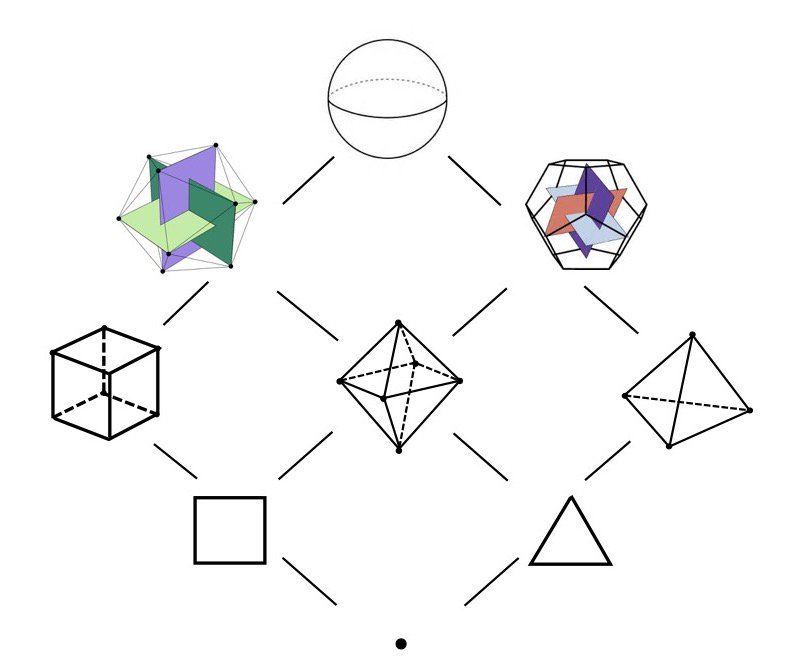Dr. Janos Sarbo, Radboud University Nijmegen, NL
Strand Campus, Virginia Woolf Building, Room 6.32, 7 June 2017, 3-4pm
Interpreting Nature
Thought is not necessarily connected with a brain. It appears in the work of bees, of crystals, and throughout the purely physical worldCharles Sanders Peirce

Process model and corresponding geometrical interpretation
According to C.S. Peirce, “Thought is not necessarily connected with a brain. It appears in the work of bees, of crystals, and throughout the purely physical world”. In this research we assume that thought, and so knowledge, arises through an interpretation of phenomena and ask what type of process is involved. To this end, on the basis of a theory of cognition and a Peircean theory of signs, we introduce a process model of interpretation and show the existence of a relation of our model with Platonic solids and the golden section. The model’s relation with syllogistic, hence the possibility of a relation between phenomena and reasoning, implies that knowledge can be inevitable.
A conclusion of this research is that interpretation can be modelled by a type of process, representing phenomena from different perspectives, including logic and language (e.g., syntax). This process is based on Peirce’s sign aspects, and in turn, his categories, that govern the formation of knowledge. Nature is interpreting and, through our thoughts, we are interpreting nature.
Biography
J.J. Sarbo is affiliated with Radboud University, Institute for Computing and Information Systems (ICIS), Nijmegen, The Netherlands. His book on a semiotically inspired model of knowledge representation has been published by Springer, in 2011. Information about his research can be found on the "Knowledge in Formation" project site.


